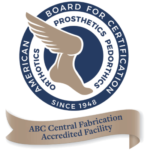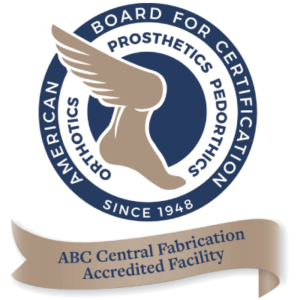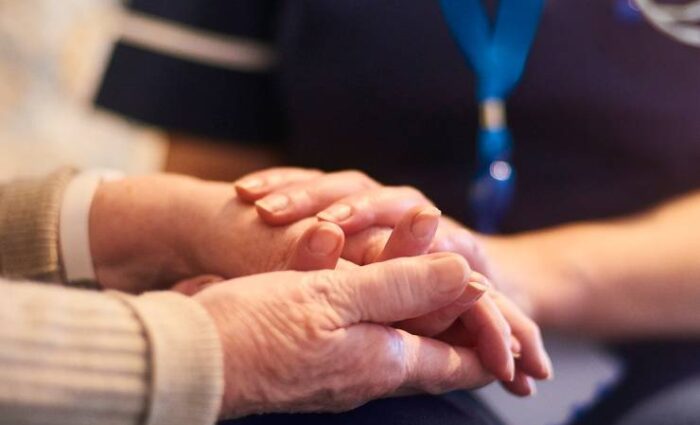For amputees, post-operative care is critical in preparing both physically and mentally for the eventual use of a prosthetic limb. At Grace Prosthetic Fabrication, we work closely with physicians, prosthetists, and other medical professionals to guide patients through this essential stage of recovery.
In this blog, we’ll discuss the key aspects of post-operative care for amputees, how patients can prepare for prosthetics, and the role of advanced prosthetic technology in improving outcomes.
1. The Importance of Post-Operative Care
The period immediately following an amputation is critical to the patient’s recovery and future use of a prosthetic device. Proper post-operative care is essential for several reasons:
- Wound Healing: Ensuring that the residual limb heals properly is one of the most important aspects of post-operative care. Infection prevention, wound cleaning, and managing pain are all vital to a successful recovery.
- Edema Management: Swelling of the residual limb, or edema, is common after surgery. Proper care, including the use of compression garments, helps control swelling and prepare the limb for prosthetic fitting.
- Muscle Strengthening: The remaining muscles in the residual limb must be strengthened to support a prosthetic. Physical therapy is often a part of this process, helping patients regain strength, mobility, and flexibility.
By addressing these early challenges, patients are better prepared for the next stage: transitioning to a prosthetic limb.
2. Collaborating with Medical Professionals
The journey to using a prosthetic is a collaborative effort involving various medical professionals, including physicians, physical therapists, and prosthetists. Each plays a key role in the patient’s recovery:
- Physicians: They monitor the patient’s overall health, ensuring that the residual limb is healing correctly and that there are no complications such as infections or excessive scar tissue formation.
- Physical Therapists: Early physical therapy helps patients maintain strength and flexibility in their remaining limbs, which is essential for walking and balance once the prosthetic is fitted.
- Prosthetists: The prosthetist works with the patient to design and fit a custom-made prosthetic that meets their mobility needs. This collaboration begins during post-operative care, as the prosthetist evaluates the patient’s progress and begins planning the type of prosthetic that will be most suitable.
Grace Prosthetic Fabrication works closely with these healthcare providers to ensure a seamless transition from surgery to prosthetic use, offering expert support and guidance at every stage.
3. Preparing the Residual Limb for a Prosthetic
Proper preparation of the residual limb is critical for successful prosthetic fabrication and use. This includes:
- Shrinker Socks and Compression Garments: These are used to control swelling and help shape the residual limb, ensuring it is ready for prosthetic fitting. This process can take several weeks but is crucial for achieving a comfortable fit later on.
- Desensitization: Patients may need to desensitize the residual limb by gently massaging or tapping the area. This reduces sensitivity and prepares the limb for the pressure it will experience from the prosthetic.
- Range of Motion Exercises: Physical therapists will guide patients through exercises that maintain and improve the range of motion in both the residual limb and the rest of the body. Flexibility is essential for using a prosthetic, as it ensures that patients can move naturally and comfortably.
Medical professionals play a vital role in overseeing these preparations, ensuring that patients are ready for their new prosthetic device.
4. Psychological Preparation
In addition to physical recovery, amputees must also address the emotional and psychological aspects of losing a limb. Many patients experience feelings of grief and loss, and it’s important to acknowledge these emotions as part of the recovery process.
- Counseling: Many patients benefit from counseling or joining support groups where they can share their experiences with others who understand their challenges. This emotional support helps individuals adapt to life after amputation and prepares them for the use of a prosthetic.
- Setting Realistic Expectations: While modern prosthetics offer incredible functionality, it’s important for patients to have realistic expectations about the capabilities of their prosthetic device. Working with their prosthetist and healthcare team, patients can set achievable goals for their recovery and mobility.
Grace Prosthetic Fabrication takes a holistic approach to patient care, offering not only the highest-quality prosthetics but also the support and resources patients need to navigate this emotional journey.
5. The Role of Prosthetic Technology in Recovery
Modern prosthetic technology has made significant advances, providing amputees with devices that offer enhanced functionality, comfort, and ease of use. Some of the most notable advancements include:
- Myoelectric Prosthetics: These advanced prosthetics use electrical signals from the patient’s muscles to control the movements of the prosthetic limb. This technology offers greater precision and more natural movement, improving the patient’s overall mobility.
- Lightweight Materials: Today’s prosthetics are made from lightweight yet durable materials like carbon fiber and titanium. These materials provide strength without adding unnecessary weight, making the prosthetic more comfortable to wear for extended periods.
- Custom Prosthetic Fabrication: Each prosthetic is custom-made to fit the unique contours of the patient’s residual limb. This personalized approach ensures a comfortable fit, reduces the risk of skin irritation, and allows for more efficient movement.
At Grace Prosthetic Fabrication, we specialize in using the latest prosthetic technology to create devices that improve patient outcomes. Our team works closely with medical professionals to ensure each prosthetic is tailored to meet the specific needs and goals of the patient.
6. The Transition to Prosthetic Use
Once the patient’s residual limb is fully healed and prepared, the transition to using a prosthetic begins. This process involves several stages:
- Initial Fitting: The prosthetist will create a custom prosthetic device based on the patient’s measurements and mobility needs. This may involve several fittings to ensure the device fits comfortably and functions properly.
- Training and Rehabilitation: Using a prosthetic requires training. Patients work with physical therapists to learn how to walk, stand, and move with their new limb. Over time, patients gain confidence and independence as they master the use of their prosthetic.
- Follow-Up Care: Even after the initial fitting and rehabilitation, regular follow-up visits with the prosthetist are essential. These visits allow for adjustments and modifications to the prosthetic as needed, ensuring it continues to meet the patient’s needs.
Contact Grace Prosthetic Fabrication for Custom Prosthetic Fabrication
Post-operative care is a crucial part of the journey for amputees, setting the stage for successful prosthetic use. By focusing on physical healing, emotional support, and collaboration with medical professionals, patients can look forward to a smoother transition to life with a prosthetic limb.
At Grace Prosthetic Fabrication, we are committed to providing top-quality prosthetics and expert guidance throughout the entire process, from surgery to full mobility. If you or a loved one is preparing for a prosthetic, contact us today to learn more about how we can support you in your recovery.






